The 20 Best Xbox Games of 2024
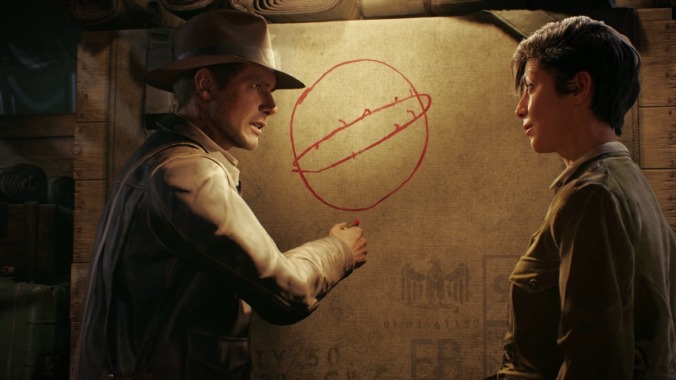
2025’s creeping a little closer every day, but we’re not ready to say goodbye to 2024 yet. Hence the daily instant nostalgia our whole damn site has been engaged in for the last three weeks. Because what activity better suits a pop culture website—even one of the good ones—than ranking all the stuff we liked at the end of the year? It’s a natural human impulse, or something. When it comes to games we’ve already done all the current consoles—check out our lists of the best PlayStation games of 2024 and the best Switch games of 2024—as well as the best PC games of the year. And we started the whole damn project off with the master list, the keystone, our guide to the best games of 2024. That leaves only one last box to check off from this series: the best Xbox games of 2024. If you somehow couldn’t tell, that’s what you’re looking at right now.
I can’t imagine how excited you must be right now.
The Xbox had some games this year. Sure, the main story out of Microsoft’s games division this year is how many studios it shut down (something Sony’s gotten pretty good at too), but that doesn’t mean the Xbox didn’t have games. So let’s talk about them. As usual, we aren’t including DLC or Early Access in our year-end lists. Unlike the others, we’re actually including December’s new releases in the eligibility pool, since the month’s almost over, and, uh, the year’s biggest, best, and most successful Xbox exclusive (they still exist, kind of) came out this month. Otherwise the game’s the same here: a small, trusted cabal of Paste‘s games writers, lead by senior editor Garrett Martin and assistant games and TV editor Elijah Gonzalez, submitted ballots back around Thanksgiving with their picks for the 20 best games of the year. The numbers were crunched and the content was created, and now you can once again skim a Paste “best games of 2024” list—now and for probably the last time. If you own an Xbox, and want to find some games to play, here are some to think about.
20. Bō: Path of the Teal Lotus
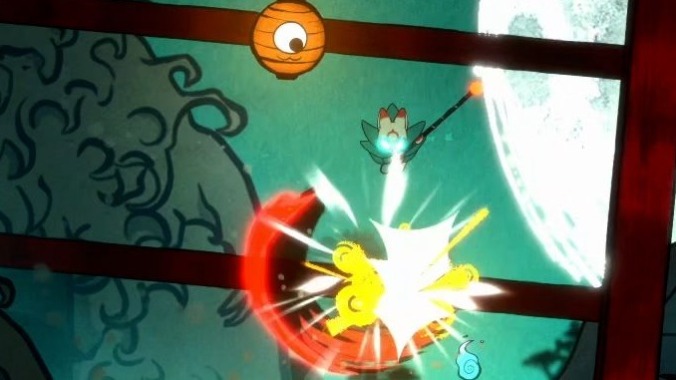
Bō: Path of the Teal Lotus heavily emulates the Metroid-y formula found specifically in Hollow Knight—the inspiration is so striking that calling it a “clone” would not be a far stretch. Bō can equip charms (here dubbed “Omamori”) to provide perks that minimally alter the flow of gameplay, such as dealing more damage while at full health. Hollow Knight’s spells appear, retooled and expanded through the Daruma system—equipable dolls, each with their own unique effect. While pulling all of this inspiration, Bō never quite reaches the height of difficulty that Hollow Knight does. Whether through platforming sections, enemy design or boss fights, Bō is a much easier game, and this is a surprisingly welcome breath of fresh air. It provides a fair challenge while still remaining accessible to those not wishing to beat their head against their controller.—Perry Gottschalk
19. Neva
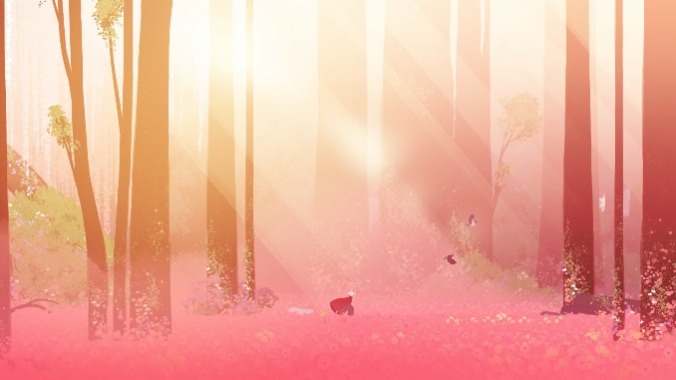
It’s pretty hard to overstate just how dang pretty Neva is. The latest from Nomada Studios (Gris) begins by taking you through impossibly verdant backdrops under a pink-blue sky, and each scene is so stuffed with lush foliage that it all feels ripped from the pages of an idyllic fairytale. But as you journey through the seasons, these vistas begin to wither from encroaching darkness, eventually leading to surreal hellscapes full of shadowy beings and impossible architecture. As these backgrounds shift and become more complicated, so does the gameplay, slowly layering additional mechanics that take this 2D platformer from its overly simplistic beginnings to a satisfying endpoint where you’re simultaneously controlling the swordswoman Alba and her wolf companion Neva against dramaturgical mask-wearing bad guys.
However, while its look and gameplay evolve enough to keep this shortish adventure largely engaging, the same can’t quite be said for its story, which starts off building towards a predictable conclusion, then zigs into some interesting ruminations on seasonal cycles of birth and death, before zagging back towards maudlin cliché. Some of its imagery and Brothers: A Tale of Two Sons-styled ludonarrative hooks almost move it past the point of coming across as broad and weepy, but it doesn’t quite get there. Still, while Neva may mostly be style over substance, thankfully it happens to be very good at the style bit. —Elijah Gonzalez
18. Like a Dragon: Infinite Wealth
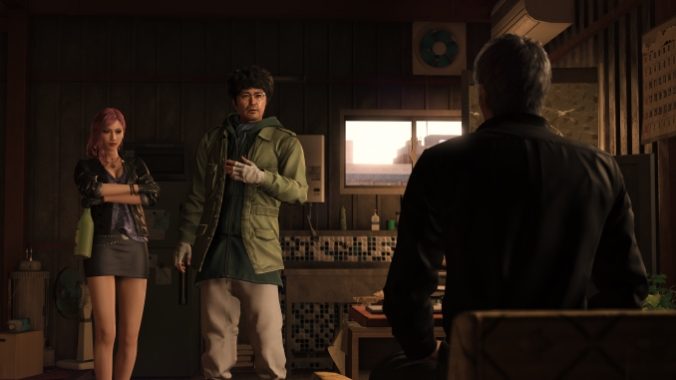
Ryu Ga Gotoku Studio continues to defy the inertia of the modern videogame industry by putting out Like a Dragon games at such a rapid clip that they’ve released like 10 of these since the last Grand Theft Auto came out. That achievement feels doubly impressive considering the scale of their most recent outing, Like a Dragon: Infinite Wealth; it contains a full-blown Pokémon-spoofing minigame, a resort simulator, dozens of oddball side missions, and tons of other distractions. And while some of these accouterments can be a tad excessive at times, most of these optional additions are quite fun and go nicely with this experience’s leisurely turn-based RPG pacing. Perhaps most importantly, though, Infinite Wealth’s central cast of characters and their endearing relationships bring it all together, resulting in the heartfelt exchanges and bursts of absurdity the series is known for. Sure, the overarching plot is as convoluted as ever and doesn’t entirely coalesce, but with its latest installment, these games continue to be some of the most earnest cultural objects in existence, and that’s certainly worth something.—Elijah Gonzalez
17. Dragon Age: The Veilguard
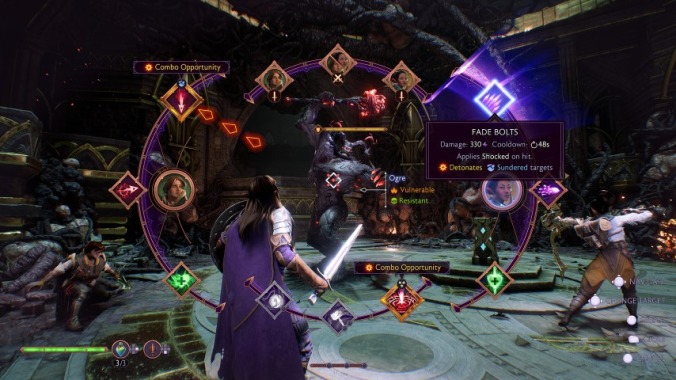
Dragon Age: The Veilguard is far from perfect; combat is repetitive, the world leans on stock fantasy concepts more than it should, and it’s a little too bloated. I only started playing it to get some background before my interview with its creative director; I never would’ve thought I’d stick with it after that interview, and keep playing it for another 50 hours or so. Part of it might be because it’s been so long since I’ve played a classic Bioware-style game that I liked, and the fundamental appeal of making friends to stop the end of the world remains strong. But it also says a lot about Veilguard and especially its writing and characters; unlike Origins or Dragon Age II, I genuinely like talking to these people, learning about their struggles and hopes, and helping them become the best versions of themselves. There’s not a single drip among Veilguard’s seven companions; sure, they can all be annoying in different ways, like most people, but they all have redeeming qualities and I haven’t yet wished I could kill any of them permanently (something I can’t say about the buddies from older Dragon Age games). And as always there’s a primal allure to making my characters’ stats go up, and rampaging through the same fights and enemies hasn’t become too obnoxious yet. I actually kind of appreciate that kind of mindless grind, as somebody who grew up back when every RPG was like that.—Garrett Martin
16. Kill Knight
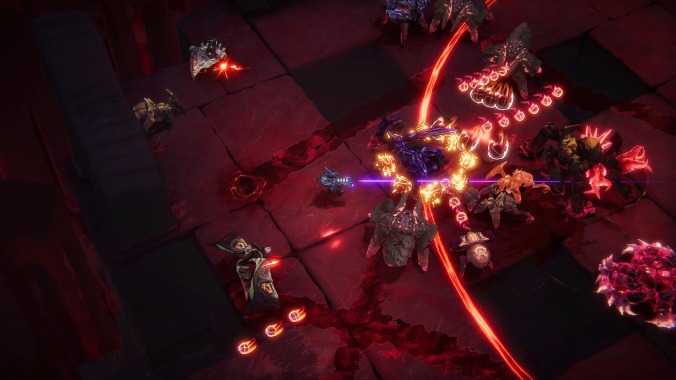
Kill Knight will make your eyes bleed, and I mean that as a compliment. You play as a banished knight doomed to fight wave after wave of creeping monsters in the Abyss, all in order to find the Last Angel and slay them. Basically, it’s a metal album cover in ludic form where you shoot and slash via arcade-style twin-stick gameplay that heavily borrows from DOOM (2016). The core loop is all about brutalizing demons while managing resources to ensure maximum-efficiency bloodletting; you need to kill with your sword to get ammo for your heavy-hitting weapons, absorb blood crystals to charge your special attack, and use said special attack to recover health. It sounds simple enough, but when the screen is filled with laser beams, saw blades, and insects from the ninth layer of hell, it can be a little tricky to keep everything straight. While each of these five levels is unforgiving and fast-paced, thankfully, the controls are silky smooth, mostly giving you the tools to overcome these torments while carving out a killer high score. While I haven’t gotten through all these arenas yet, at its best, I’ve found myself completely engrossed in white-knuckled leaderboard chasing as I tried to maintain my combo and composure.
If I have a main complaint, though, it’s that some of these levels feel less thoughtfully designed than others (I hate the third one!) because they can be filled with traps that are hard to parse amidst the screen full of guys who really, really want to kill you. Another grating detail is that to unlock new weapons and armor, you’re encouraged to complete arbitrary optional objectives that mostly feel like a chore (you can also buy these via an in-game currency, but this takes forever). Basically, getting at least some of these extra weapons seems pretty important for competing on the leaderboard, but doing so can feel like a grind, and I honestly would have preferred it if all the stages and items had just been unlocked from the jump to make it easier to get to the good part. Still, while it can be a tad frustrating in some ways, Kill Knight is a must-play for high-score chasers who want to test their reflexes or see alarming amounts of lo-fi carnage.—Elijah Gonzalez
15. Kunitsu-Gami: Path of the Goddess
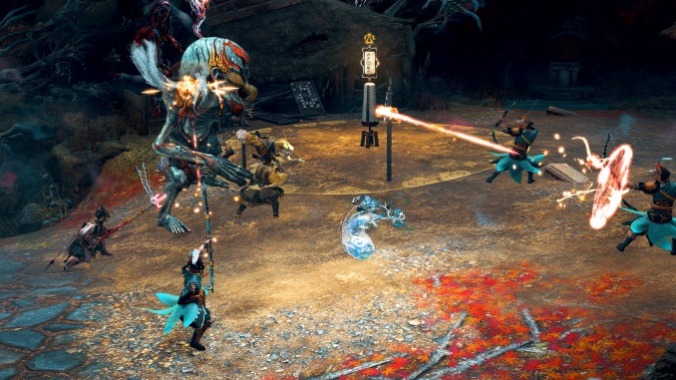
Dance-mad strategy game Kunitsu-Gami is a grower. I couldn’t stop thinking about it after my positive-but-cool review back in July, and even went back and started it up again a month or two later, which I almost never have time to do. It’s fundamentally out of step with the industry and its trends today, and totally confident in that unique vision, which is the kind of fire that forges cult favorites. It was not a hit, but it found its people, and those people love it, for good reason: it mashes up tower defense strategy with the satisfying scratch of the village sim, and then steeps it all in a bewitching portrayal of Japanese folklore. It might have fallen off the radar for most people, but Kunitsu-Gami is a path worth taking, and one of the best games of 2024.—Garrett Martin
14. S.T.A.L.K.E.R. 2: Heart of Chornobyl
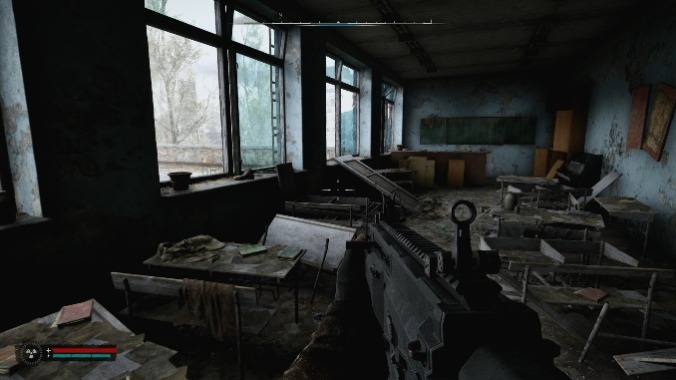
The act of playing S.T.A.L.K.E.R. 2 is one of low-grade sadomasochism. For the right kind of person, it’s immensely satisfying, but that satisfaction comes at a cost. This is a tense, unnerving, and brutal game even when you’ve kicked the difficulty down to Story Mode. It maybe could use a second pass of balancing. Or you could just learn to run fast.
The instant I left homebase, my posture changed. Despite it being just a videogame, I could feel my breathing and heart rate shift. My muscles tensed, and I bit down on my molars and had to repeatedly stop myself from grinding them. It’s hard to find a spot in The Zone that isn’t beautiful in some way. It’s impossible to find a spot out on an excursion that’s remotely safe. Danger is everywhere. Everything is a hard-won slog. It’s quite possible that I actually hate playing S.T.A.L.K.E.R. 2, that the true faithful are built different. I’m willing to accept that.
But that’s because if I had to distill it down, this is a game about being miserable in an irradiated and seemingly cursed field in Ukraine with no real end in sight. In that regard, the game is a runaway success. I only know peace at the campfire or makeshift bar. I am miserable going on missions. Every time I peek through a door, I feel my breath catch and seize in my lungs. Seeing movement on the edge of a hillside or distant rooftop makes my hands cramp up instinctively from not knowing if I’m going to be in a tense, 20-minute-long firefight. The heartbeat sound effect feels like an out-of-control ear infection and makes my head hurt like one. And for what? Most of my time is spent rummaging through trash for irradiated cans of whatever or vodka to cure the radiation I am absorbing while looking for something that isn’t vodka. I can feel the lactic acid pooling in my muscles just thinking about it. This is raw survivalism in a Gerd Ludwig nightmare. And yet, everyone dies in The Zone eventually.—Dia Lacina
13. Unicorn Overlord
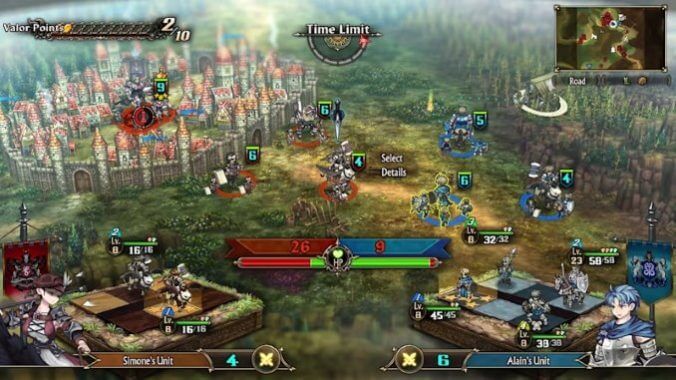
This is more or less the story of Unicorn Overlord: Its art is beautiful, its battle system is fun, and it has the best gameplay loop of maybe any SRPG I’ve ever played, reminiscent of old Fire Emblem if it were built with modern conveniences. It’s a pretty wrapper for a bad story, but that story is at least unobtrusive enough that it neither adds nor takes away from the gameplay. Building towns and promoting units gave me an unmatched feeling of satisfaction, and when I got to see my improvements play out against an especially tough battle, it felt great. I did find myself dragging my feet at about the 30 hour mark, when I was close enough to the end to have made most of the improvements to my army that I could, but no longer pulled through by the momentum of the story. What made me push through wasn’t just how fun the action is, but the small things: the design of new items in the shop, the new towns to save, and the fun of remixing my units to see if they could win in new ways.—Emily Price
12. Shogun Showdown
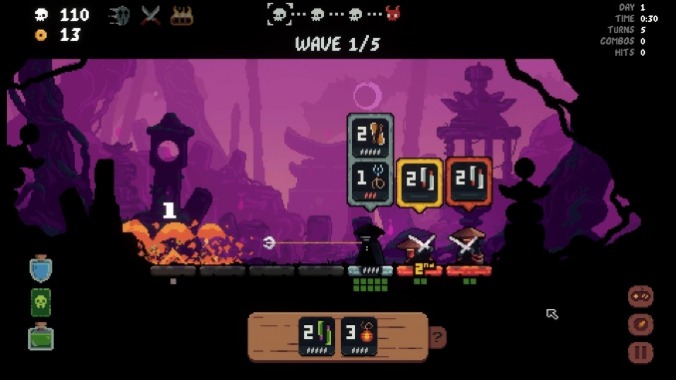
Listen, I get the complaints, especially for folks with no interest in cards; roguelike deckbuilders have rapidly become a hot genre, sometimes to the point where it feels like every other game made by a smaller team checks these same boxes. But while there are a lot of them, a significant chunk of these find their own fascinating niches, which not only helps distinguish them among genre-diehards but also helps newcomers wrap their heads around a style of experience they may not get the appeal of. By removing the traditional concept of a deck while retaining complexity and tough choices, Shogun Showdown threatens to suck in a whole new cohort until they’re haggling at their local boardgame shop for the Planeswalker that will tie their deck together (ok, maybe they won’t go that far, but still). There may be a lot of games about cards these days, but as long as we continue to get ones that shuffle things up in bold and compelling ways, I’m not worried about getting sick of the genre any time soon.—Elijah Gonzalez
11. Crow Country
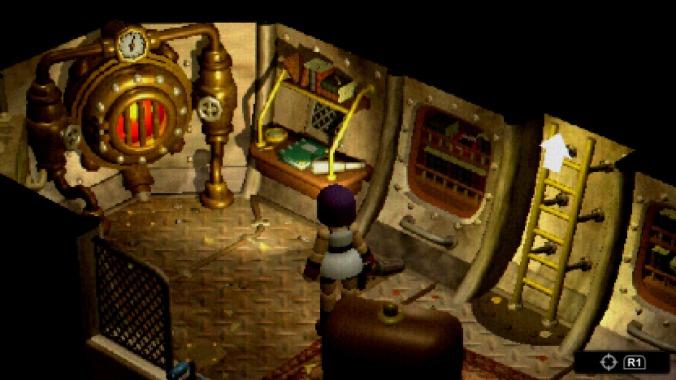
Set in 1990 in an abandoned theme park in Paste‘s home town of Atlanta, Ga., Crow Country wears its OG PlayStation influences on the sleeves of its Charlotte Hornets Starter jacket. On the surface it ticks off all the classic survival horror boxes: limited ammo and health, an awkward aiming system, incentivizing head shots (or even just running) over any other attacks, and a claustrophobic atmosphere full of dread and jump scares. I generally hate survival horror, so I’m glad to report there’s so much more to Crow Country beyond those genre trappings. It’s really more about puzzles than action, almost like a Sierra point-and-click with a three-quarters view and the occasional need to shoot something. You explore the park’s various themed areas, looking for clues to a bewitching central mystery about the park’s creation and abrupt closure. The writing is compelling throughout, both creepy and funny, and its small cast of characters are concisely sketched with lifelike depth. It’s an engrossing enigma that’s clever from start to finish, and with buckets of retro warmth and charm. Plus it mentions the Atlanta Falcons. Obviously I’m going to dig it.—Garrett Martin
10. Little Kitty, Big City
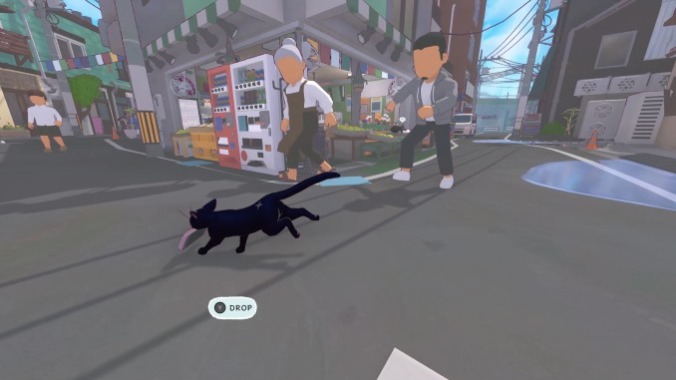
“Hang out games”—games without urgency, that explicitly try not to stress you out too much—cozy games, as many call them—can be tough to get right. They can feel too much like busy work, with a checklist of stuff it wants you to do every day (hey, Animal Crossing!) It’s also not easy to build a world players want to hang out in. You have to be really good at writing stories, creating characters, and putting them in an environment that, if not warm and inviting, is at least compelling enough to keep players checking in. That’s the greatest strength of Little Kitty, Big City. I love this little kitten. I love how it slinks, stalks, crawls, and runs through the city. I’ve tripped probably 100 very serious business people on their way to work and it’s never gotten old. I love all these characters—the brave ducklings who roamed the city for show and tell, the sleepy bodega cat who proclaims himself the mayor, the shiba inus who go out of their mind barking at the kitty unless you give them a bone, which they’ll manically gnaw and slobber on for the rest of the game. Charm coats this game like hair and dander on a cat lover’s couch. With Little Kitty, Big City, Double Dagger has given us an ideal “hang out” game that helps so much to alleviate stress and sadness that it might also be the first “hang in there” game.—Garrett Martin
9. Tales of Kenzera: ZAU
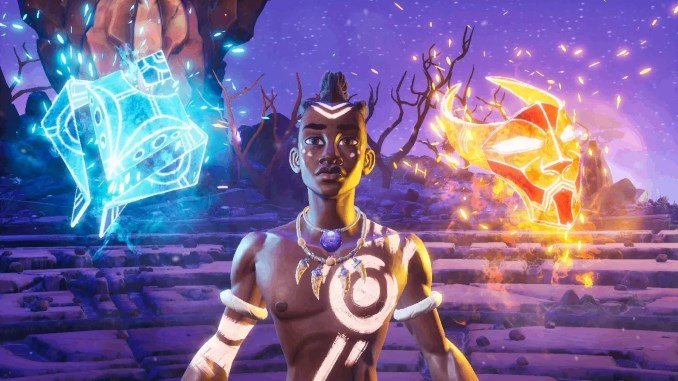
The beauty of Tales of Kenzera: ZAU is that grief is not linear. It’s not something you heal from and it doesn’t ever look the same across two people. It’s a deeply unique experience, but at the same time, it’s also universal. The complexity of grief is what makes it so. Zau feels anger, guilt, and sadness. He feels all of it and he mediates those emotions in the Great Spirits he helps cross over. He helps a parent loosen their grip on their child, he provides a salve to the anger between father and son, and he learns to let go. Each new character is a different expression of why you can get stuck in your loss, how it can debilitate you and keep you in an endless loop, ultimately impacting those around you. But even when the darkness rushes in at the end of boss battles as you try to escape a zone, the vibrancy of those emotions is never lost. When I pitched this article, I didn’t know if anyone would understand what I meant. The grief that Surgent Studios has captured is vibrant and saturated. It’s not a dull pang or a numbness that creeps. It’s more potent and the beautiful world it lives in makes it all the more impactful.—Kate Sánchez
8. Dragon’s Dogma 2
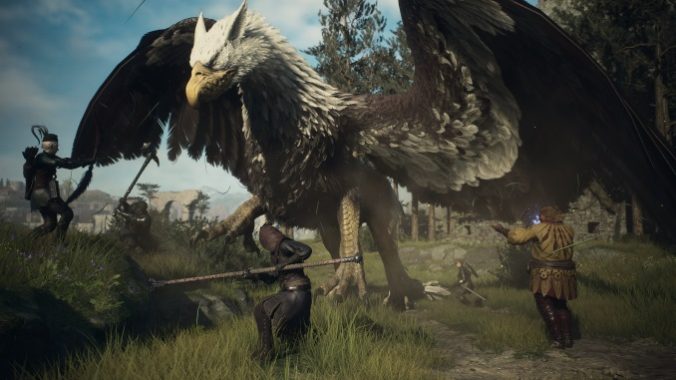
Although its story centers on a monarch trying to reclaim their crown and all the power that comes with it, Dragon’s Dogma 2’s greatest delights come from accepting you can’t control everything. You can’t influence inclement weather or the sun disappearing over the horizon as unsettling monstrosities burst from subterranean layers. You can’t blink across the world without paying for it, and instead, must take long journeys where the only cure for dwindling strength is rest. Sometimes, you can’t even get up a particular cliffside, its steep terrain forcing a different path. And most of all, you can’t always control who lives and dies (although there is a hilariously arcane process to resurrect the dead, for a price, of course). It’s not challenging in quite the same way as FromSoftware’s output, like Dark Souls and Sekiro, although I can see why those comparisons are made. Here, the toughness is less about learning to dodge-roll at the right time and more related to preparation and countering weaknesses. Dragon’s Dogma 2 also isn’t some entirely avant-garde, player-hating thing that rejects “fun” outright. It feels really good when you shield bash a guy, weaponizing the same inertia that’s sent you slipping down slopes to make a foe do the same. After hitting an off-balance enemy with a follow-up attack (aptly named “Empale”), the immaculate thud of the ensuing audio cue is music to my ears. It’s damn satisfying whenever things line up perfectly, like cutting a bridge out from under a charging Cyclops or sending a boulder ripping through an army of Saurians. But what makes these moments truly pop is that you don’t have fine control over when they arrive.—Elijah Gonzalez
7. Prince of Persia: The Lost Crown
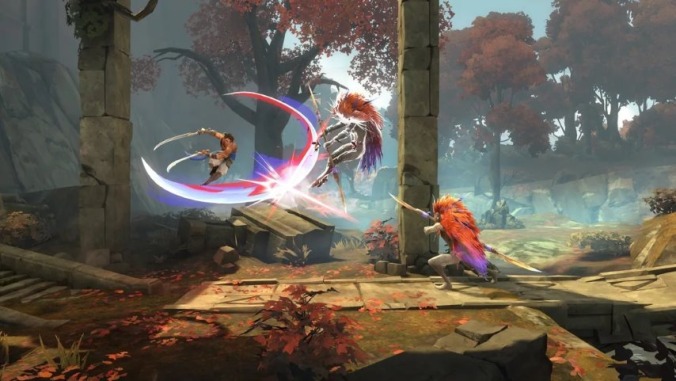
From the first rotoscoped jogs and leaps of Jordan Mechner’s brother, the core of Prince of Persia has been one of the exaltation of movement. We’ve come a long way since young David’s parking lot antics. Returning to its two-dimensional origins, The Lost Crown carries forward the dedication to cruel traps, brisk combat, and fluid motion into a stunningly-realized, interconnected world of elaborate puzzles and shortcuts, and it does it all with a rush of speed the franchise has rarely known. With how truly outstanding this game is, I’d be remiss in not mentioning how astonishingly idiotic the powers-that-be at Ubisoft were for dissolving and reassigning this team to work on old, crusty IP that posts big numbers for shareholders instead of giving them every opportunity to succeed a second time.—Dia Lacina
6. Tekken 8
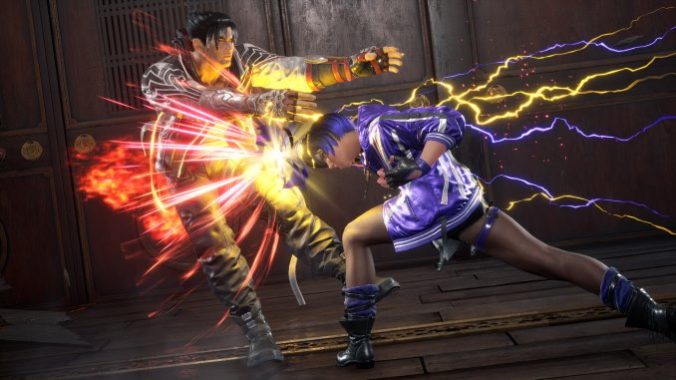
Tekken 8 may not be a sea-change sequel, but it hones what came before, reducing pain points for newcomers without reducing the complexity that makes this series special. Although the dust needs to settle to determine if its Heat system’s boons outweigh its shortcomings, the massive character movesets, rewarding roster, and explosive combos ensure its battles are exciting and tactically deep. Improved teaching tools, like its Arcade Quest mode and training room adjustments, make it easier to experience these highs. Additionally, its revamped look and hard-hitting aesthetics elevate not only its matches but also its story, a high-octane anime-inspired romp that ties together three decades of history into a resounding haymaker. If you’ve ever wanted to learn how to beat a buddy mashing cheap moves in your dorm, been curious about what’s going on under the hood as Arslan Ash and Knee duked it out in impossibly hype EVO sets, or wondered why these buff dudes keep throwing each other off cliffs, there’s never been a better time to dive into the strange and wonderful world of Tekken and find out for yourself.—Elijah Gonzalez
5. Llamasoft: The Jeff Minter Story
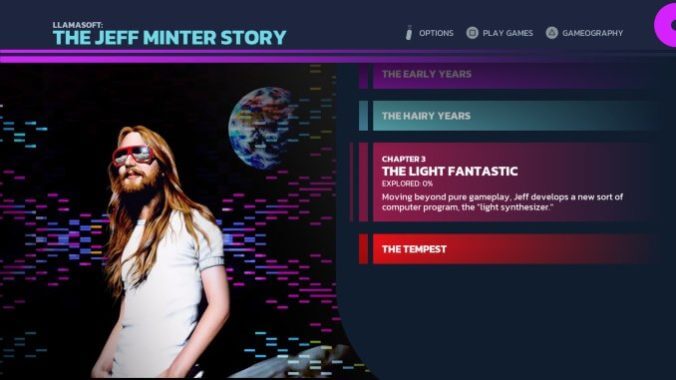
Just as earlier Gold Series entry The Making of Karateka and its precursor Atari 50 gave us an in-depth look at the background and creation of the games they focused on, Llamasoft is full of videos and archival footage about game designer Jeff Minter’s decades-long history and how his games were created, marketed, and received by the press and the public. Minter himself is beguiling, a shamanistic figure who indulges his love of computer games, psych and prog rock, and hoofed mammals in semi-seclusion in Wales, and who has been an outspoken proponent of independent game design for most of his career. The latest entry in Digital Eclipse’s series of playable documentaries collects dozens of Minter’s early games, from his earliest ZX81 rough drafts up to his 1994 masterpiece Tempest 2000, and the hallmarks of a true artist are unmistakable. Throughout his career Minter has continually iterated on similar themes, mechanics, and images, creating a unified body of games whose dreamlike logic and visuals are at odds with their strict difficulty and well-defined mechanics. Minter’s work exists in the contrast between form and function; he’s a visual iconoclast resolutely exploring the most traditional notions of “gameplay” through surreal arcade games that always bear his personal signature. His games look like abstract art and play like something you could’ve found in a bowling alley arcade in 1985, and that’s about the most bulletproof approach to game design I can think of. For over 40 years Minter has made some of the greatest, most inventive games ever, and this brilliant collection is one of the best games of 2024.—Garrett Martin
4. Animal Well
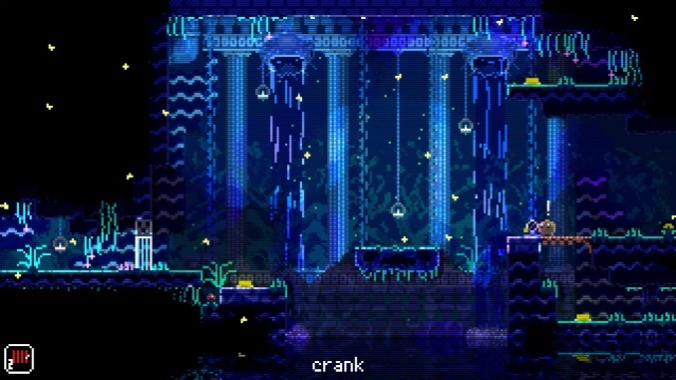
You’ve probably seen many of Animal Well’s components in isolation before. Its structure is at least partially inspired by games like Metroid, its style of puzzles bear a lot of resemblance to Fez, and its retro aesthetics call to mind a whole host of older games and contemporary works. But the way these parts come together is nothing short of uniquely enrapturing. Its smaller puzzles are rewarding, and its larger ones are so satisfying that things can quickly spiral into outright obsession, something made more captivating by this well-realized setting that is charming and disquieting in equal measure. At its core, Animal Well profoundly understands how to encourage and pay off curiosity, which is probably why, even after digging into and solving many of its mysteries, I still need to know just how much deeper this rabbit hole goes.—Elijah Gonzalez
3. Indiana Jones and The Great Circle
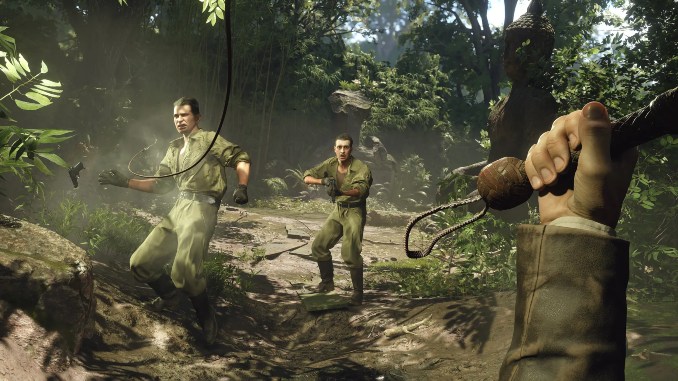
Indiana Jones and the developers at MachineGames are a perfect fit, and not just because they both (rightly, righteously) hate Nazis. The studio was formed by several key figures from Starbreeze, who broke the adaption curse two decades ago with the excellent games The Chronicles of Riddick: Escape from Butcher Bay and The Darkness, before devoting the 2010s to the current Wolfenstein series. The Great Circle owes more to Butcher Bay than anything else, with a stealth-heavy focus and well-implemented immersive sim qualities that fit both Indiana Jones as a character and the tone of his movies. Indy slinks around archeological hot spots like the Giza pyramids and crumbling Thai temples, unraveling a Nazi occultism plot with the help of an Italian investigative journalist that he obviously falls in love with, while you, the player, try to complete missions and puzzles without getting into direct combat. It’s not surprising that a MachineGames release is well-written and acted, but it is a shock how well The Great Circle pulls off the Indiana Jones of it all—not least of which is the startling recreation of Harrison Ford circa the mid ’80s. The cutscenes look and feel like an Indy film, and constantly working games actor Troy Baker somehow channels Ford’s recognizable voice and demeanor without coming off as an impression. The Great Circle isn’t perfectly rounded—if you don’t stick to the main quest it feels as bloated as any Ubisoft game, after a certain point it has no idea what to do with its female lead (played by Italian actress Alessandra Mastronardi), and it almost feels pandering and imitative in how closely it sticks to the tone of the two universally loved Indy films (Raiders and Last Crusade)—but it’s way better than almost anybody expected it to be, and easily one of the best Xbox games of 2024.—Garrett Martin
2. Metaphor: ReFantazio
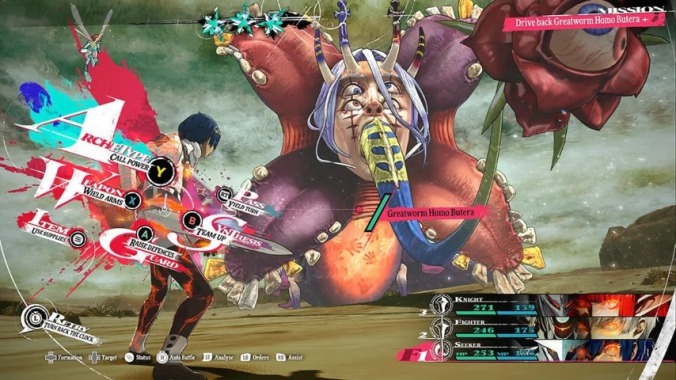
Metaphor: ReFantazio is a great RPG, and an excellent wake up call. The message within it doesn’t feel tacked on. The developers aren’t giving themselves a pat on the back with a not so subtle wish for the story they crafted to be the fantasy that inspires the player without the required foundation. Different structural framings (“use your time wisely and strive to be the best version of yourself”) make a difference. When some people still consider games like Final Fantasy VII to be apolitical in 2024, perhaps the bluntness is justified.
As Metaphor: ReFantazio constantly reminds us, both micro and macro problems are intertwined. What’s the perspective of somebody looking for an abortion in a red state, a family separated by the border, a kid in Gaza? The examples are everywhere, and they’re visibly blunt, too. They’re there while we scroll down on the timeline or in three-second-long attention span cycles while we swipe reels. If only more people made the effort to see things through somebody else’s eyes, perhaps we could regain some semblance of hope that change might stop being a fantasy.—Diego Nicolás Argüello
1. Balatro
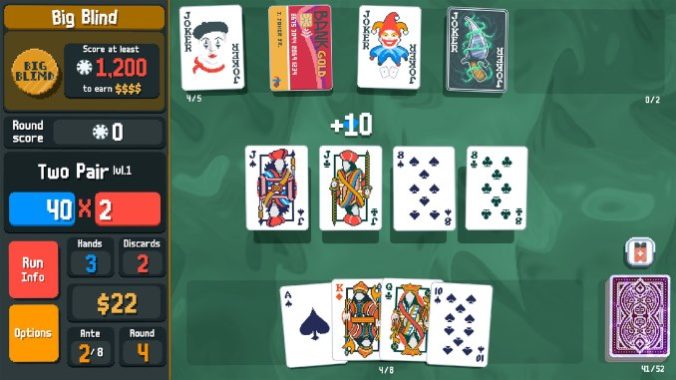
As someone who would rather play virtually any board game than a hand of poker, I was pleasantly surprised by Balatro, a roguelike deckbuilder that transforms this card game into something else entirely. Some elements are what you’d expect; you begin with a standard 52-card deck and score by putting together traditional poker hands like pairs, flushes, and straights. However, where things get interesting is that over the course of a run, you can augment your deck by replacing certain cards with others, upgrading them, collecting passive upgrades that amplify your score, and more. Instead of playing against opponents like in Texas Hold ‘Em, your goal is to build hands that score enough chips to get you through an increasingly expensive series of antes. Like any successful deckbuilding game, decision-making matters in both assembling your deck and playing it. Instead of just going by traditional poker hand strength, points are calculated by multiplying the base amount of chips your hand is worth (chip count corresponds to the card rank, i.e., 9, 10, J, Q, etc.), with the particular multiplier associated with that hand (for instance, a two pair has a x2 multiplier while a three of a kind has a x3 multiplier). Where things get busted is that you can upgrade the multipliers associated with specific hands or cards, and passive abilities add to your multiplier, which can eventually dramatically boost the number of chips you earn. You can gear your deck around certain hands, suits, or passive abilities to increase the odds of hitting big. Outside of the deckbuilding, you’re given a wide array of options and information that makes it feel tactically deep. The game counts cards to let you know the odds, has the option to discard and redraw, allows you to change the order that passive abilities activate, and has consumable items. Good deckbuilders feel fair and like they offer meaningful decisions while constructing and playing your deck. Balatro does all that while also letting you blast apart the rules of poker.—Elijah Gonzalez
Follow Paste Games on Bluesky.